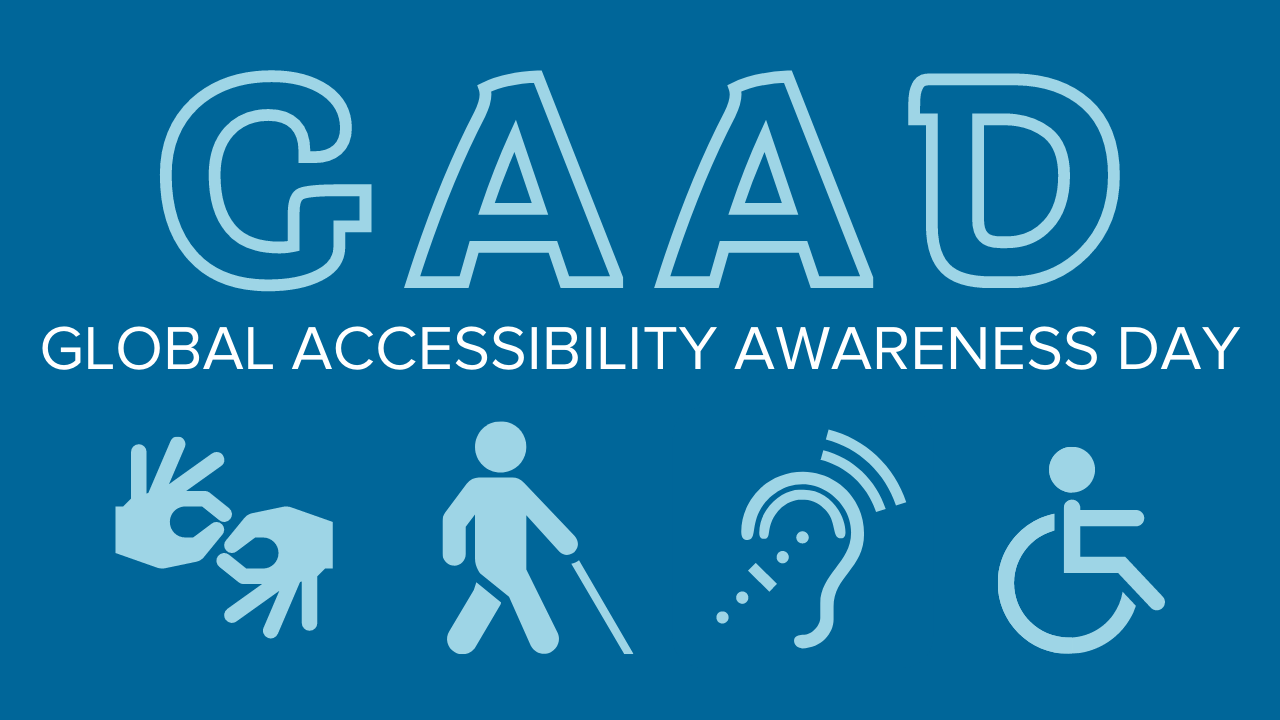Global Accessibility Awareness Day is about putting actions in place so we do not have to make assumptions about someone’s ability.
In honor of Global Accessibility Awareness Day, let’s talk about inclusive design. Inclusive design does not just benefit those with a known disability. There are many benefits that can be seen to help all people regardless of ability.
Let’s discuss opportunities that we can all take to create a more accessible environment for ourselves, other members, family, and friends alike.
Inclusive design has become a staple in our society, and we may not even know it. Think about a crosswalk: what do you see, what do you hear, what do you feel?
- A lit sign tells you when it is okay to walk.
- The crosswalk sign is beeping as you walk across the street.
- The drivers stop before the parallel white lines of the crosswalk.
- You step across the indented curb.
This is an everyday example of inclusive design. Here’s why…
- The lit sign is a visual aid designed for safety; those hard of hearing and universal symbols like a stop hand or walking person are used.
- The beeping on the sign aids those visually impaired to tell them how quickly they need to finish crossing the street.
- The stoplights and lines of the road can help hearing-impaired drivers identify where and when to stop.
- The curb cut (i.e., ident in the curb) was originally designed for people with wheelchairs.
- The truncated domes or tactile paving inform the visually impaired that they are about to leave the sidewalk and enter the street.
We can find many of these inclusive designs all around us. What other inclusive design can you think of?
There are many inclusive features available in tools we use every day at school or work. Did you know that platforms like Microsoft Teams and Zoom have accessibility features that you can use? A few special features focus on accessibility for all like live closed captioning, call transcription, raise hand, record calls, immersive reader, and even blurred or virtual backgrounds.
Why should we embrace assistive technologies?
- Assistive technologies were designed to aid those with impairments or disabilities. They can also be a valuable tool to help create clarity or understanding in general.
- Empower the people around you! We don’t know and should not ask if someone has a disability. Assume that these adaptive tools help everyone.
- An inclusive, accessible workplace creates a happier and more engaged workforce.
With all this in mind, how can we embrace accessibility when it comes to Omega Phi Alpha? How can we focus on creating an accessible and inclusive environment for those individuals who are (or want to be) a part of or involved with our organization? Here are just a few things to consider and anticipate:
- How would you modify or adjust any of your current activities to ensure the participation and engagement of people with disabilities?
- Are the buildings and spaces your chapter uses for meetings or events accessible?
- Would someone who is wheelchair-bound be able to have the same experience as another member at a service project?
- Have you enabled closed-captioning on your virtual meetings and events to allow those who may be hard of hearing the ability to see what speakers are saying?
In closing, as an inclusive organization, we as members have a responsibility to create and maintain an environment for members, new members, and others that is accessible and free of discrimination and harassment. And as a service organization, emphasizing accessibility could be one of the most important ways we can serve our members and communities alike.
At the national level we are taking steps to ensure that accessibility is at the forefront of our minds as we plan events and engagement opportunities for our members. Earlier this year, our Board of Directors approved an organization-wide Accessibility and Accommodations Policy and we’ve added an accessibility and accommodations coordinator to our Operational Leadership Team. This is only part of our ongoing inclusivity journey, and a step we hope will lead us in the right direction.

